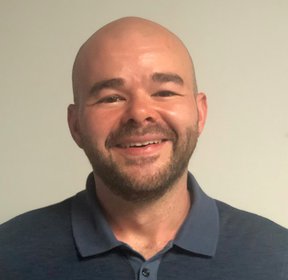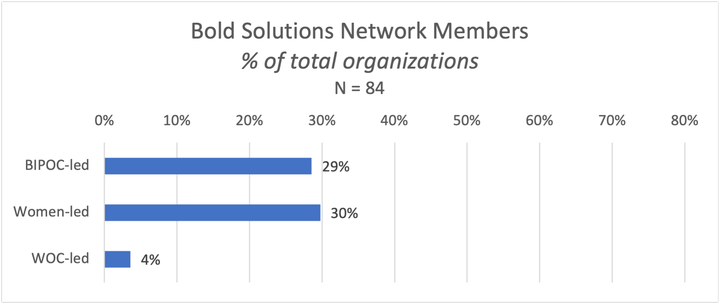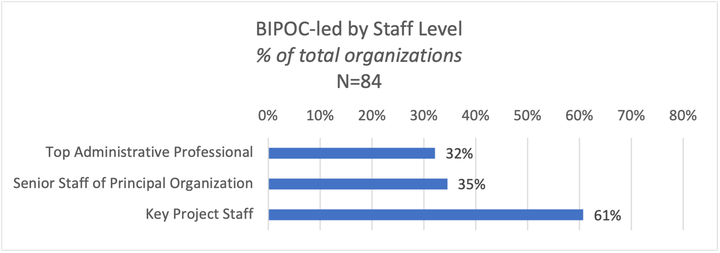The past two years have been a learning experience for us all, with the continued national reckoning with racial inequity, magnified by health inequities that COVID-19 has brought to light.

Written by Tom Watkins, Lever for Change Cross-Foundation Administrator
As donors actively seek to engage with these topics, and fund organizations working to address racial inequity, it is more important than ever for Lever for Change to better understand the organizations and project teams in our Bold Solutions Network, which showcases the highest-ranked proposals that have emerged from each of our challenges.
In the spring of 2021, we began our information refresh process to ensure project details and Bold Solutions Network profiles were up to date, enabling us to accurately provide information to prospective donors. In our process, we decided to collect additional demographic data in order to best match aspirations of donors wanting to support BIPOC (Black, Indigenous, and People of Color)-led and WOC (Women of Color)-led organizations*.
Demographic Survey Parameters
Of the 100 organizations surveyed, 84 completed the project refresh process and provided their aggregated organizational demographics. The questions included identification based on race and ethnicity, sex and gender, LGBTQIA+ community, and disability status.
In order to obtain a comprehensive demographic data set, and to gather information that could best support donor decision making, we asked these questions in respect to three different levels of staff:
- Top-level administrative official (i.e., CEO, President, Executive Director),
- Senior staff of the principal organization (defined as those who report directly to the CEO or top-level official), and
- Key project staff (defined as individual managers who are responsible for the success of the project).
Demographic Data Findings
Of the 84 organizations that participated in the refresh, BIPOC-led organizations make up 29%, women-led 30%, and WOC-led 4%.

This provides us with an initial set of data for further analysis regarding representation. This data has helped us pair donors with organizations and project teams that align with what they are seeking to fund. It is also important to share this data for purposes of transparency and for tracking changes in the types of organizations and project teams that rise to the top of our competitions over time.
We segmented each level of staff (top-level administration, senior staff, and key project staff) to determine if there were significant differences in diversity throughout organization hierarchy. When considering the top-level tier on its own, 32% of organizations are BIPOC-led; for senior staff, 35% are BIPOC-led; and for key project staff, 61% are BIPOC-led. Another point of interest we noted is that the BIPOC-led organizations in our network tend to be among the larger organizations.
Our team at Lever for Change recognizes that we are working within a system with intrinsic inequities, where diversity is inconsistent across and within organizations. This data is a reflection of these systems, and we know there is more work to be done. These findings help us understand where representation is lacking in the organizations we are promoting and can help us reflect on our outreach strategies to ensure we encourage more diverse organizations to participate in relevant competitions.

Learning from Data
The remarkable work of these outstanding organizations in our Bold Solutions Network is driving toward a more just and equitable world. We value transparency and the discussion around disproportionate power and representation, and also the good work of all of our partners. When we understand the teams with whom we are working already, we are more easily able to match them with the best donors for their projects.
Diversity, equity, and inclusion strategies and analysis are not a prescriptive and mandated initiative. Rather, they are an opportunity to see if there are gaps in our processes, which, when addressed, can help us increase our outreach to more diverse organizations and examine competition processes that may skew who applies.
This is a time for accountability, and a time for grantmakers and foundations to question their own policies and processes to ensure that those who have been historically excluded have representation. We strive to ensure that the voices that have traditionally been invisible now have the visibility they deserve. The more we learn about our Network members, including the people and communities they are helping, the more we can evolve our approaches to fill those gaps, honor representation, and find new ways to listen.
See other lessons we've learned from our information refresh process in this article, Leading by Learning: Giving and Receiving Feedback. To get the latest updates on Lever for Change's progress right in your inbox, sign up for our newsletter.
—
Many of the organizations surveyed are global, as we work with organizations and project teams all over the world. It is important to acknowledge that in certain regions, diversity and inclusion strategies align more around sex and gender, regional ethnicity, religious diversity, and other factors.
*Definitions:
- BIPOC-led is defined as 50 percent or more identifying as Black, Indigenous, and People of Color within the top administrative professional of the organization and one or both of the following: senior staff or the principal organization and key project staff.
- Women-led is defined as 50 percent or more identifying as female (which may include cisgender women, transgender women, and female-identified individuals) within the top administrative professional of the organization and one or both of the following: senior staff or the principal organization and key project staff.
- Women of Color-led is defined as 50 percent or more identifying as female and BIPOC with the above criteria.